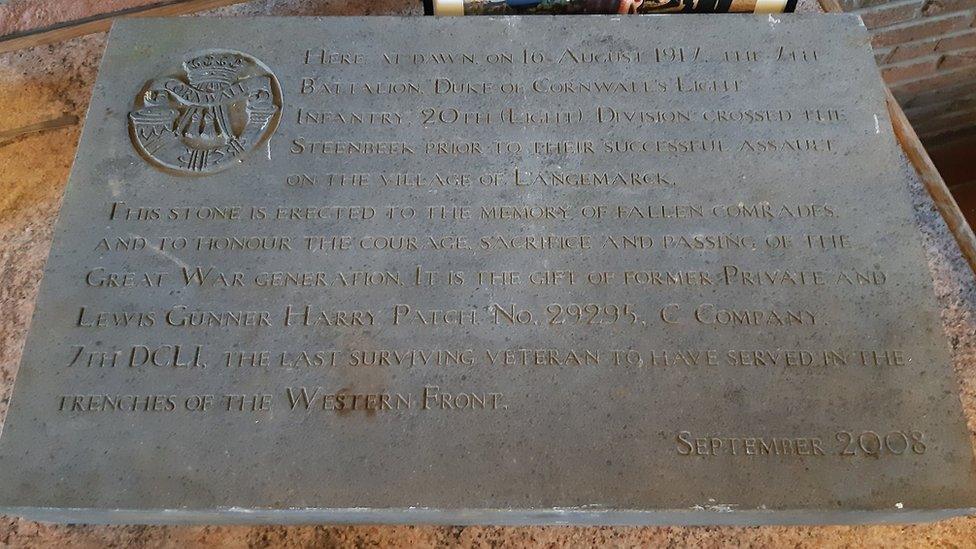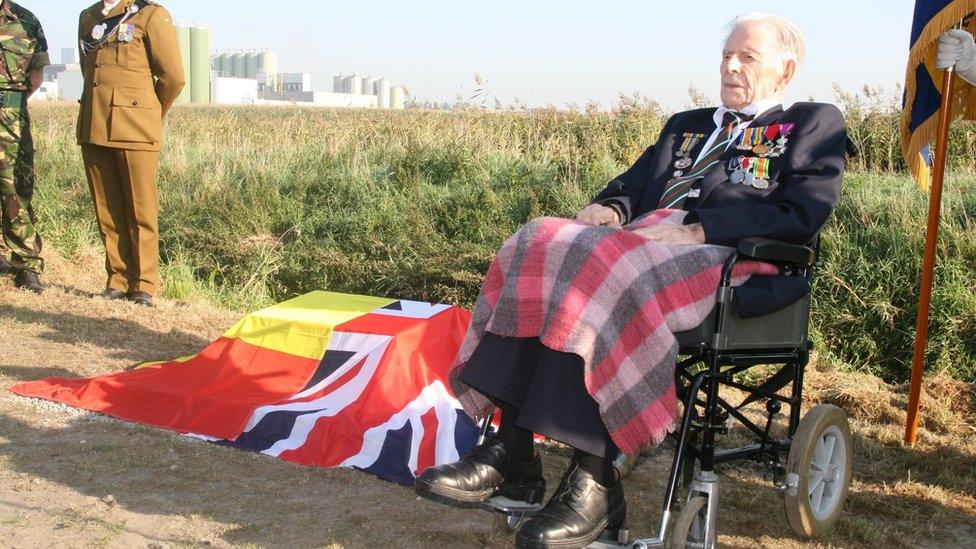Missing WWI memorial stone laid by Harry Patch returned
- Published

The original stone was returned in good condition two years after it went missing
A memorial stone laid by Harry Patch, Britain's last survivor of the World War One trenches, has been returned two years after it went missing.
It was believed to have been stolen in July 2018 and more than £3,000 was raised to replace the memorial three months later.
Mr Patch, who died in 2009 aged 111,, external was present at the unveiling of the plaque in Belgium.
The returned memorial will be placed in Talbot House Museum in Poperinge.
Military historian Jeremy Banning, worked with the veterans and was a close friend of Mr Patch's, from Combe Down, near Bath.
He said the plaque went missing on 11 July 2018 and was handed back on 18 January to Johan Vandewalle, the owner of a café at Polygon Woo in Belgium.

Jeremy Banning (right) met Harry Patch (left) in 2002 and was with him when the memorial was revealed in 2008
It was first laid in Langemarck, which is the site of one of only four German cemeteries in the western Flanders region of Belgium where more than 44,000 soldiers are buried.
The stone was dedicated in part for Mr Patch to mark the location where he went over the top.
Mr Banning has posted a thread on Twitter explaining how the stone was recovered.
It is believed a lorry driver, who happened to be parked nearby, saw a local farmer "in his tractor reversing into the memorial".
The farmer had allegedly wanted to dispose of the plaque in a nearby river but the driver took it off him.
Mr Banning said the reason it had not been returned sooner was unknown.
Allow X content?
This article contains content provided by X. We ask for your permission before anything is loaded, as they may be using cookies and other technologies. You may want to read X’s cookie policy, external and privacy policy, external before accepting. To view this content choose ‘accept and continue’.
Simon Louagie, manager of Talbot House Museum said: "The stone is very heavy but it's in great condition and ready to be displayed."
"Harry was a remarkable man with a message of peace. We have his bench in the garden 10 years on and people still use it to relax and reflect on his life.

Harry Patch was the last surviving British World War One soldier
The stone will go on display as part of the 'Garden Party' exhibition in Talbot House Museum in May.